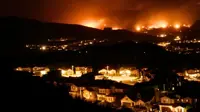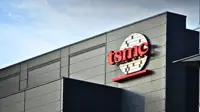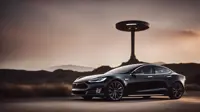Modi gets a grand reception in Tokyo ahead of summit with Abe
01 Sep 2014
Prime Minister Narendra Modi was accorded a red carpet welcome at the Akasaka Palace in Tokyo, ahead of his scheduled summit talks with Japanese counterpart Shinzo Abe to bolster bilateral security and economic ties.
On the third day of his Japan visit, Modi and his Japanese counterpart will look for ways to take India-Japan strategic and global partnership forward.
Earlier in the morning, Modi addressed a gathering of top Japanese business leaders and invited them to join India's developmental efforts with a promise of non-discriminatory and speedy clearances.
He also announced the setting up of a special management team under PMO to facilitate business from Japan (See: India to open special window for Japanese investments).
Addressing top business leaders of Japan and India in Tokyo, Modi flagged the recent decisions of his government to liberalise FDI policy in railways, defence and insurance and said rules and laws are being changed in India, which would show results in the near future.
Modi, who enjoyed immense reputation in Japan as the Gujarat chief minister for ensuring the state's industrial progress, said India wants to emulate Japan in terms of quality, zero defect and delivery systems while carrying out skill development.
Cooperation in the fields of defence, civil nuclear, infrastructure development and rare earth material is expected to top the agenda of Modi's discussions with Abe. Some agreements in defence and civil nuclear sectors, including joint production of rare earth materials, are expected to be signed.
Modi, who landed in Kyoto on the first day of his Japan visit, was received by Abe, who had specially flown in from Tokyo to meet Modi, in a rare gesture.
On the second day of his Japan tour on Sunday, Modi offered prayers at two prominent ancient Buddhist temples in Kyoto and sought help from a Japanese Nobel Prize-winning stem cell researcher to develop a treatment for sickle cell anaemia, a deadly disease commonly found among tribal people in India.
In Kinkakuji temple, the prime minister mingled with tourists and visitors and posed for photographs with groups of people. He began his day with a visit to the ancient Toji Temple. He was accompanied by his Japanese counterpart Shinzo Abe at the famous temple which is a UNESCO world heritage site.
Speaking at business lunch hosted by Nippon Keidanren at Japan Chamber of Commerce and Industry in Tokyo today, PM Modi said, ''India and Japan have a responsibility beyond that of bilateral relations. Indian and Japanese businessmen can give a direction to the world economy. Naturally, expectations from Japan are high as our ties are much older. We also want to work with Japan in the field of research and skill development.''
He also said, ''We know that businessmen need a good environment to grow and this is our responsibility. The state has to be policy driven. We have given importance to good governance and to processes. We are looking at how to integrate technology with governance.''
During his summit talks the prime ministers of India and Japan are also likely to agree to speed up talks on a nuclear energy pact, the Nikkei business daily said, although hopes of striking a similar accord to one reached with the United States in 2008 had faded in the run-up to the visit.
Japan wants explicit guarantees from India, which has not signed the nuclear non-proliferation treaty, to limit atomic tests and allow closer inspection of its facilities to ensure that spent fuel is not used to make bombs. Japanese firms also want clarity on nuclear disaster compensation, especially in the wake of the March 2011 Fukushima catastrophe.
Also under discussion will be a proposal to formalise a 'two-plus-two' format for talks bringing together the foreign and defence ministers of both countries, and the possible sale of an amphibious aircraft to the Indian Navy.
India and Japan are also likely to agree to hold regular joint training exercises in maritime defence, some of which will involve the United States as well, the Nikkei said.
India, Asia's third-largest economy after China and Japan, needs faster economic growth to create work for the one million young people who enter the workforce every month.
Modi said the ''21st century is Asia's century, the world has accepted it. The question on my mind is - how will it be? We have to provide the answer,''
After his speech, Modi was given a standing ovation by Japanese business leaders at Japan Chamber of Commerce and Industry.



.webp)
.webp)

.webp)
.webp)

























